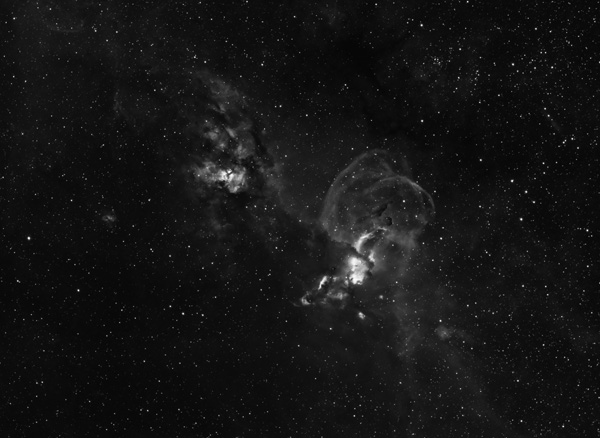NGC 3576 and NGC 3603 (Narrow Band)Location: Warrumbungle Observatory, Australia (149 11 E, 31 16 S) Date: 4 and 8 May 2012 Camera: QHY-9 Telescope: William Optics M120 Frames: Seventeen 20 minute Ha frames Processing: Individual frames stacked and resultant image deconvolved in CCDStack, curves, levels, sharpened and noise reduction in Photoshop CS5. Text adapted from APOD: An intriguing and beautiful nebula, NGC 3576 (right) drifts through the Sagittarius arm of our spiral Milky Way Galaxy. Within the region, episodes of star formation are thought to contribute to the complex and suggestive shapes. Powerful winds from the nebula's embedded, young, massive stars shape the looping filaments. The dramatic image also highlights the contribution of hydrogen, energized by intense ultraviolet radiation, to the nebular glow. But the glow also silhouettes dense clouds of dust and gas. For example, the two condensing dark clouds near the top of the nebula offer potential sites for the formation of new stars. NGC 3576 itself is about 100 light-years across and 9,000 light-years away in the southern constellation of Carina, not far on the sky from the famous Eta Carinae Nebula. On the left of the picture is NGC 3603, a much larger but more distant star forming region. |
|
All images and content are copyright. You are free to use material for private use. This does not include placing any material on other websites.


